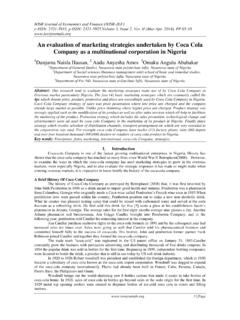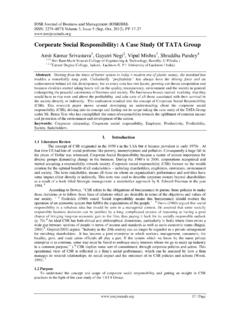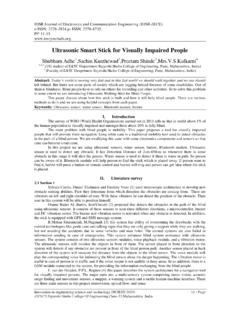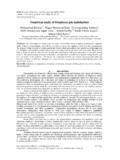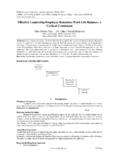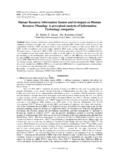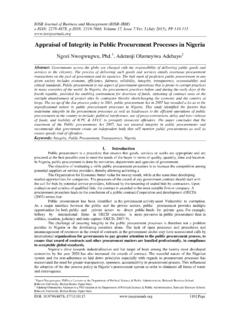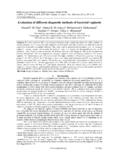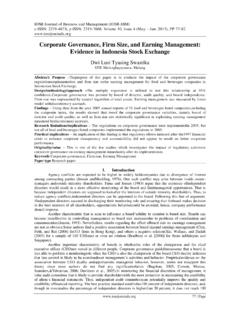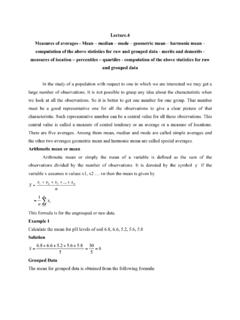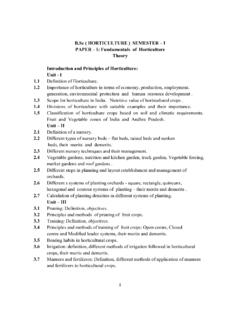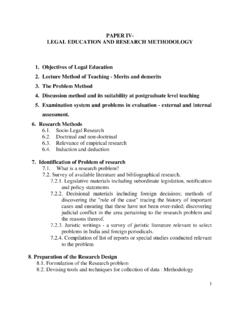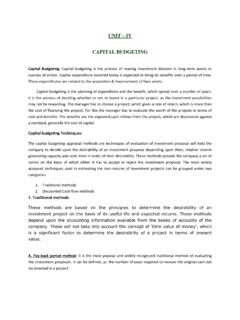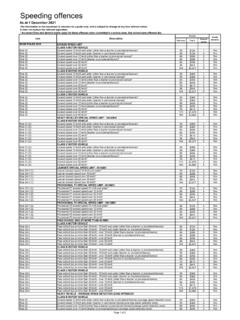Transcription of A Critical Review of Multinational Companies, Their ...
1 IOSR Journal of Business and Management (IOSRJBM) ISSN: 2278-487X Volume 3, Issue 5 (Sep,-Oct. 2012), PP 28-37 28 | Page A Critical Review of Multinational Companies, Their Structures and Strategies and Their Link with International Human Resource Management Fayaz Ali Shah1, Dr. Rosman Md Yusaff2, Altaf Hussain3, Jawad Hussain4 1, 3, 4(PhD Student, Faculty of Management and Human Resource Development, University Technology Malaysia) 2(Associate Professor, Faculty of Management and Human Resource Development, University Technology Malaysia) ABSTRACT: This Review paper critically examines Multinational company; discuss its merits and demerits for host countries and debates on its various types of structures and strategies.
2 The main part of this Critical Review relates about the various types of structures and strategies which Multinational companies adopt while conducting business across boarders. It starts by defining Multinational Company discussing its merits and demerits , analysing the various components of its strategies and structures and comparing the merits and demerits of these different types of structures and strategies. A thematic approach rather than chronological approach has been used mainly due to the purpose and approach necessary for such type of Review . The thematic approach enables an analysis of a specific topic or theme without considering the chronological order of which the research has been conducted. In latter part this Review discusses the relationship of these strategies with international human resource management and also highlights the implications of different companies strategies and structures for the international human resource management (IHRM).
3 And at end we concluded that the role of IHRM varies in different types of organizational structures and therefore the implications of these structures are also vary for international HRM. Keywords- International Human Resource Management, Models, Structures and Strategies, Multinational Companies I. Introduction Over the past thirty years, the conceptualization of global strategies by Multinational Corporation has developed dramatically (Adler, 1997: Bartlett, & Ghoshal 1998), and the implication of these global strategic models for international human resource processes and practices has no less dramatic (Black et al., 1999). Despite these important developments, however, major discontinuities between these global structures and the international human resource processes that are required to implement them remain (Heidenreich, 2012).
4 The main players in a global knowledge-based economy are Multinational companies (MNCs). No one can deny the importance of MNCs in the current global business environment. Multinational Companies coordinate and control subsidiaries across national boundaries and are thus obliged to operate in different national contexts (Heidenreich, 2012). Objectives Of The Study The objectives of this study are: to critically examine Multinational company; discuss its merits and demerits for host countries and debates on its various types of structures and strategies. to Critical analyze various types of structures and strategies which Multinational companies adopt while conducting business across boarders. To study the relationship of these strategies with international human resource management To highlights the implications of different companies strategies and structures for the international human resource management (IHRM).
5 A thematic approach rather than chronological approach has been used mainly due to the purpose and approach necessary for such type of Review . The thematic approach enables an analysis of a specific topic or theme without considering the chronological order of which the research has been conducted. A Critical Review Of Multinational Companies, Their Structures And Strategies And Their Link With 29 | Page II. Definition Of Mnc There is no universally accepted definition of a Multinational company available. Multinational Corporations have been broadly defined as business firms that uphold value added-holdings overseas. According to Spero and Hart (1999) a Multinational corporation (MNC) as a business enterprise that maintains direct investments overseas and that upholds value-added holdings in more than one country.
6 An enterprise is not truly Multinational if it only operates in overseas or as a contractor to foreign firms. A Multinational firm sends abroad a package of capital, technology, managerial talent, and marketing skills to carry out production in foreign countries. Dunning (2008) supports the same view and defining MNC as an enterprise that engages in foreign direct investment (FDI) and owns or, in some way, controls value added holdings in more than one country. Hennart (2008) defines MNC in a different way that they are a privately owned institution devised to organise, through employment contracts, interdependencies between individuals located in more than one country. while Multinational Corporations according to Kogut and Zander (2003) are economic organisations that grow from its national origins to spanning across borders.
7 As an ILO (2010) report observe The essential nature of a Multinational company lies in the fact that its managerial headquarter is located in one country while the company carries out operation in a number of other countries as well. Merits Of Mncs According to Heidenreich, (2012) and ILO (2010) the main merits and demerits of MNCs are: Help to increase investment, income and employment in host country. Transfer technology to developing countries. Make a commendable contribution to inventions and innovations DEMERITS OF Mncs It is true that MNCs have some advantages for host countries however; MNCs have been criticised on the following grounds. MNCs technology is designed for world wide profit maximisation, not for the development need of poor countries. Through power and flexibility, MNCs can evade national economic autonomy and control, and Their activities inimical to the national interest of particular countries.
8 MNCS cause fast depletion of some of the non-renewable natural resources in the host country Strategic Objectives In this part of the Review we will discuss strategic objectives of MNCs and will show how MNCs follow different competitive strategies to achieve these objectives. (Bartlett & Ghoshal, 1992), suggest that, there are three strategic objectives of MNCs. Global efficiency Flexibility Organizational learning (transfer of information) As Bartlett & Ghoshal suggest, these objectives are very important for MNCs, although Their degree of importance vary from company to company. For global efficiency it is necessary to realize that every possible source of competitive advantage has been identified and utilized. It is important to realize that global efficiency can be enhanced both by increasing revenues and by lowering costs.
9 Important factors influencing efficiency include labour, productivity, capital intensity, economies of scale, learning-curve effects and a company cost culture generally (john et al., 1997) Multinational flexibility according to Bartlett and Ghoshal (2000) means the ability of a company to manage the risks and explore the opportunities that arise from the diversity and volatility of the global environment. Lastly, a major objective of MNCs is facilitating learning across units. In addition to encouraging new learning, MNCs also encourage and facilitate the transfer and sharing of new knowledge. III. Definition Of Strategy According to chandler (1962) strategy is the determination of the basic long-term goals and objectives of an enterprise and the adoption of courses of action and the allocation of the resources necessary for carrying out these goals Bartlett and Ghoshal (2000), distinguish four different strategic approaches that focus on the different combinations of the sources of competitive advantage (the means) and strategic objectives (the ends).
10 A Critical Review Of Multinational Companies, Their Structures And Strategies And Their Link With 30 | Page IV. Multidomestic/ Multinational Strategy To achieve different strategic objectives this strategy gives prime importance to one of the means, national differences. This strategy is a collection of relatively independent subsidiaries, each focusing on specific domestic market. The company manages its business with minimal direction from headquarter. By differentiating Their products and services to respond to differences in consumer s tastes and preferences and government regulations, these companies achieve global efficiency and increase revenues. Through this responsiveness to national differences they also realize the opportunities associated with Multinational flexibility.
